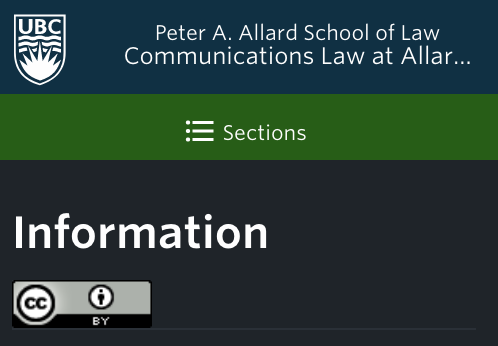![]()
The above is the only avatar I’ve ever used out of its game-given context. It was generated on an X-Box 360. An article on some (gaming?) website showed me how to export it, and so I did. It is slimmer and more jaundiced looking than I actually am (or was at time). The blue shirt is pretty accurate although the minimal resolution doesn’t allow for whether it’s buttoned down (as mine are) or not. Let’s not even start in on the virtual hair and how much more the avatar has then is my current reality. Hair colour and the process of greying should also be beyond discussion.
The question of whether avatars can be defamed comes up periodically (See, for example, Defamation of Second Life Avatars: How the Laws of First Life People Could Be Invoked). Today I just want to set out a few possible first principles for further analysis. I will use Canadian law as my jumping off point simply because one of previous lives as newsroom lawyer acquainted me with some of the principles to be applied and the cases that apply them. Some of the discussion that follows first manifested (if memory serves) during an improvised reply to a question during the semester.
So here goes…
- As the post just below this one illustrates my starting point is that there is no virtual world. What we call the virtual world is just part of this world and is subject to our worlds laws’, ethics, principles, and sense of justice. That digital issues have contextual differences that must be considered when applying our rules seems pretty obvious, though the devil will always be in the details.
- Accordingly, in principle there should be no problem defaming an avatar as long as the legal requirements of the tort are met.
- One particular aspect of defamation law makes it that much easier to see that defaming an avatar should have consequences. That aspect is the emphasis defamation law has always placed on “reputation” and it’s public manifestations. In fact some of the largest defamation awards in Canada have been attributable not to the private persona of the individual defamed, but to their public participation, persona, and stature. For example Vogel v. CBC (1982), 35 B.C.L.R. 7 (S.C.) was for many years understood to be the largest defamation award in B.C. (if not Canada), precisely because it involved the Richard Vogel, who at the time was Deputy Attorney-General of the Province. The case of Hill v. Church of Scientology of Toronto (Supreme Court of Canada) similarly involved a recognizable crown prosecutor.
- In this context, what is an avatar other than part of one’s public persona? In an ontological sense there is no difference between a game avatar and being Deputy AG or Crown Counsel. All are personas projected from a real-life person that occupy a public-facing space. All have qualifications to entry and public privileges associated with the exercise of their public persona and position.
- There remain some difficult questions. Perhaps the most challenging is what should be done in respect of an avatar of huge reputation whose human originator is masked or unknown. My first instinct is that as long as the person behind the avatar is ascertainable and exists, the relative proportion of public to private reputation should not be a factor, and is not in the cases as I read them. That said I don’t believe an A.I. (Artificial Intelligence) can sue, since Defamation is very much rooted in the “sting” to our egos we humans feel when personally attacked. But who knows, if machines ever are acknowledged as sufficiently conscious, this too could change.
Hopefully this has been a useful conceptual introduction. Would appreciate any feedback or questions.
Jon
 Communications Law
Communications Law